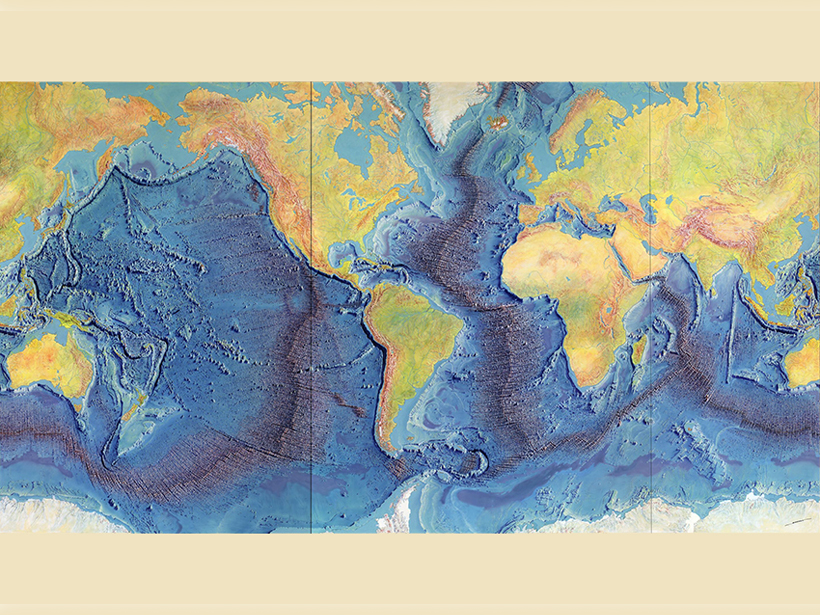In October, we celebrate AGU’s Centennial by looking under our feet, where the relatively new study of plate tectonics is evolving rapidly.
plate tectonics
How Volcanic Mountains Cool the Climate
Though coastal plutons spew greenhouse gases into the atmosphere as they form, they also pull some of those gases back out of the atmosphere as they break down over time.
New Volcanic Complex Found Below the Southern Tyrrhenian Sea
Researchers have identified a previously unknown volcanic-intrusive complex that originated through the melting of mantle material at the northern edge of the Ionian slab.
Déjà Vu: Understanding Subduction Zones’ Cycle of Seismicity
A unique geodetic data set from Japan’s Nankai subduction zone offers an unparalleled opportunity to study surface deformation spanning almost an entire seismic cycle.
Deciphering the Fate of Plunging Tectonic Plates in Borneo
What happens when subduction stops? A team of scientists installed a dense seismic network in Borneo to investigate causes and consequences of subduction termination.
Low-angle Normal Fault in Papua New Guinea is Rolling Along
Geologic and geomorphic observations of an active low-angle normal fault reveal a rolling-hinge mechanism accommodating the exhumation of a metamorphic core complex in Papua New Guinea.
Linking Observations and Modeling of Flat-Slab Subduction
The Center for Tectonics and Tomography: Workshop on Flat Slab Subduction; Houston, Texas, 18–20 January 2019
Imaging an Earthquake Rupture in High Definition
New field measurements using terrestrial laser scanning provide a detailed, centimeter-scale image of surface deformation patterns caused by the Magnitude 6.6 earthquake in Norcia, Italy.
Resolving a Cordilleran Conundrum
A novel geophysical technique documents the existence of a “missing” fault, along which major displacement could have occurred during the Cretaceous on North America’s northwest margin.










